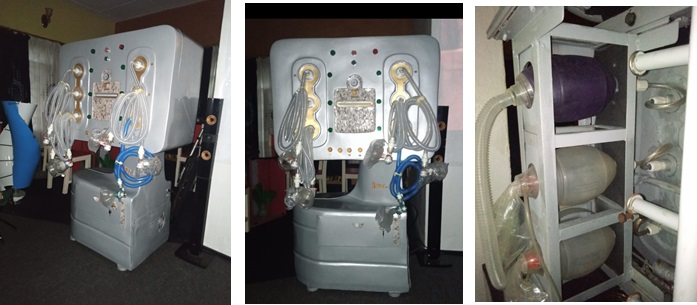While it is evident that Nigeria’s medical system is vastly underdeveloped and underfunded, the national response to the Covid-19 pandemic underscored the level of unpreparedness, particularly in the provision of assisted respiration. As parts of the line of defence, the pandemic’s protocol stressed five main points: (1) maintaining social distancing, (2) regular washing of hands (3) the use of hand sanitizers (4) the use of nose masks, and (5) vaccination. However, beyond the line of defence, ventilator machines were the “last line” of defence, particularly for vulnerable populations like children, the elderly and those with pre-existing health conditions, who may develop severe breathing problems. According to Swamy and Sirur (2020), ventilators became the last resort in the fight against the pandemic. This is so, because according to the World Health Organisation, about one in six persons will develop severe respiratory problems, making ventilators important and urgent equipment in the ICUs of hospitals. However, since each patient needs be hooked to a ventilator, and at delivery costs of up to N15 million per imported unit, it could not be economically feasible for hospitals in Nigeria to acquire such expensive imported machines in the quantities needed for a 200-plus million population. For, it would have required federal, state and private hospitals to commit up to N15 million per ventilated patient, which is unrealistic.
From this situation analysis, it was clear that the more viable option was to design and develop functional ventilators to meet Nigeria’s peculiar medical ventilation needs, beyond the Covid-19 pandemic. The advantages that will be inherent in Nigerian-content ventilators is that they are made here and will be cheaper to acquire, easier to deploy and cheaper to maintain. Against this background, Babson designed the none-intrusive BMV-6 Ventilator (Babson’s Multiplex Ventilator), taking a radical approach to it. Rather than create a design according to the “global norm” of one patient to a ventilator, the BMV-6 is designed to independently ventilate 6 persons simultaneously. The inspiration for this innovative design came from the fact that Nigerian hospitals are mostly shared wards, making one patient per ventilator unfeasible in most cases. With the BMV-6, up to six patients in a ward can be simultaneously ventilated, using the same machine, the same power consumption, the same space and the same budget. More than this, the entire cost of the BMV-6 ventilator prototype made by the Nicost Team is N5 million, which is only 30% of the cost of an imported machine. Put differently, while the BMV-6 ventilator machine will ventilate 6 patients for an invested N5 million, to simultaneously ventilate the same number of persons with an imported ventilator will cost N90 million. This cost differential is a huge justification both for the production and use of the BMV-6 ventilator in Nigeria. During the design and prototyping phases, the BMV-6 Ventilator was continually tested by Dr. Akpama, an anaesthetist in the General Hospital, Calabar. He found that the ventilator worked according professional standards. With the success of the prototype, the Nicost Team has designed a production copy, which is to be controlled by a touchscreen interphase, and with independent oximeter per patient, monitored on the screen. Funding is being sought to produce the production copy.
What is unique about the BMV-6 Ventilator?
- 1) It is designed to use 24v DC instead of 220v AC, making it to consume minimal energy.
- 2) Its 24v DC design means it can be powered by renewable sources such as solar and wind, making it ideal in the hinterlands where national grid is either absent or undependable.
- 3) Much cheaper to acquire and can be maintained without foreign technicians, imported spare parts and knowhow.
- 4) Unlike expensive imported ventilators that ventilate one patient at a time, the BMV-6 machine independently ventilates 6 patients simultaneously.
- 5) It has an inbuilt battery that runs the machine for more than 3 hours after power outages





